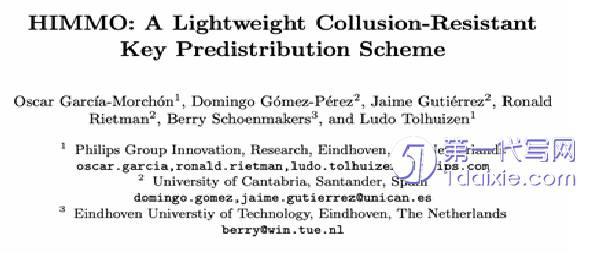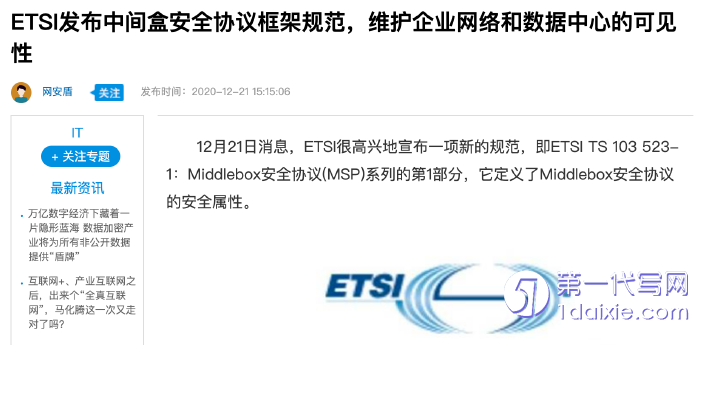本文是一篇英语论文,在以往研究的基础上,本报告更加关注翻译过程,分析并解决了实际翻译过程中的困难。本报告试图支持Katharina Reiss的文本类型学在实践中的应用,以期为同类型的英汉翻译实践提供理论支持和解决问题的思路。
Chapter 1 Introduction
1.1 Description of the Task
As a European Standards Organization (ESO) officially recognized by the European Union, European Telecommunications Standards Institute (ETSI), produces globally applicable information and communication technology standards like cybersecurity, mobile, radio, transport, broadcasting, and Internet technologies. Therefore, the author chooses the association’s annual report as the translation material, which has a specific progressive nature. In terms of theory, text typology has been constantly revised, supplemented, and deepened in recent decades, making a progress from the initial theoretical research level to the application and practice level, which provides strong support for the translation of scientific and technological texts. Therefore, the author carries out the translation based on Reiss’s text typology. For the translation industry, this translation project reflects the characteristics of the information and communications technology (ICT) and has particular theoretical and practical value for specific problems in the translation practice of report-type informative texts; at the same time, this translation practice report contributes to the text typology theory into application.

1.2 Significance of the Translation Task
Through the translation of Work Programme 2021/22, this translation project provides readers with widespread knowledge about telecommunication standard formulation. This translation practice, combines the translation theories with the specific translation skills that the author has learned so that the author’s translation skills are further exercised and improved through continuous review and reflection. What’s more, the author’s ability regarding the European telecommunication regulations and technical knowledge are expanded by studying and translating the development report.
Theoretically, the report has enriched the text typology of Reiss by applying the theory to the practice. Practically, this report tries to help translators in translating the same type of text and provide reference for them and promote the efficiency of their translations, for instance, by choosing the appropriate translation techniques for different text types, thus increasing the efficiency and accuracy of their translations.
In addition, this translation material is highly specialized in ICT, and translators usually lack professional knowledge in this field. Thus, it is challenging for us to translate the original text into a high-quality version. And the translator finds out that problems such as inconsistent translation of terms, the incomplete transmission of information, and illogical context often occur in the translation process. This report analyzes and solves some translation difficulties when doing the translation project, aiming to provide insights into the practice of the same type of E-C translation practice.
Chapter 2 Description of Translation Process
2.1 Time Arrangement
The author began to translate the excerpt from Work Programme 2021/22 in November 2021, with 6,185 words and a translation of 10,900 Chinese characters in total. It took the author half a month to complete the translation of the first draft, and then the author began to revise and polish the translation continuously. Finally, the author conducted the translation project in January 2022 and then began to write the translation report. In fact, the translation task and the writing of the report have been finished on schedule.
2.2 Related Studies
This part reviews the previous studies, mainly analyzes the results of text typology and information efficiency, and points out the research gap for this project to work on.
2.2.1 Studies on Text Typology
Text typology is a theory of translation criticism proposed by Katharina Reiss (2004) in her book The Potentials & Limitations. Reiss proposes her classification of text types on the primary function of the text, and she argues that each text is dominated by only one function while there are multiple functions in the text, and this primary function determines the choice of translation strategy. Texts dominated by information functions should ensure that the content remains unchanged during translation. When criticizing translation, critics should first judge whether the content and information of the original text are fully presented in the translation. This indicates that the translation should not only conform to the expression of the target language, but also ensure that the original information is transmitted completely and thoroughly (Reiss, 2004). If the original text is to convey information, including the “communicative language” of the “zero information”, the translation should convey the information “directly” and “completely”. Although some authors have unique stylistic style in writing the information texts, the primary purpose of translation is to achieve the consistency of the content with the original text, to achieve effective transmission of meaning, and the accuracy of the information (Venuti, 2000).
Chapter 3 Case Analysis ....................................9
3.1 Accuracy of Information ......................................9
3.1.1 Terms ............................................9
3.1.2 Abbreviations ..................................12
Chapter 4 Conclusion ....................................23
4.1 Findings ......................................23
4.2 Limitations ...................................23
Chapter 3 Case Analysis
3.1 Accuracy of Information
According to Reiss, the primary purpose of information text translation is to ensure the accuracy of information (Hu Zuoyou, 2008:250). In natural and social sciences, the content can be effectively communicated only if the terms and idioms of the relevant disciplines are used accurately (Reiss, 2004:30). This translation practice material contains many terms and abbreviations that require special attention during the translation process. For terms, the translator can refer to the relevant parallel texts. Suppose there is not a corresponding translation method for a rare term. In that case, the translator can make a scientific and reasonable translation according to the context and the principle of term translation. For abbreviations, it is necessary to consult relevant reference books or use the Internet to adopt authoritative and popular translation methods to avoid mistakes and maintain consistency in the context.

Chapter 4 Conclusion
4.1 Findings
This report first summarizes the translation standards of informational texts, which are accuracy, completeness, and logicality. The author reviews related studies on informational text translation, text typology and information effectiveness. Based on Katharina Reiss’s text typology, the author constructs a framework for the analysis of this translation project. With some valuable source text excerpts, the author describes the difficulties in the translation and provides the translation methods, which helps to enrich the connotation of Reiss’s text typology.
In view of problems in the translation process, the author proposes the following solutions with specific cases: when translating scientific and technological texts, the main purpose is to reproduce the transmission of information. In terms of information accuracy, it is necessary to consult a large number of documents and books to achieve accurate and unified translation of terms and abbreviations, without missing the key information; in terms of information completeness, lexical and grammatical translation compensation should be made under the condition that the content of the original text remains unchanged. In the aspect of information logicality, we should focus on the coherence and logicality of long sentences and texts. Besides, we should clarify the implicit logical relations according to the contexts.
In addition, based on previous studies, this report pays more attention to the translation process, analyses and solves the difficulties in the actual translation process. This report tries to support the application of Katharina Reiss’s text typology into practice, with a view to providing theoretical support and problem-solving ideas for the same type of E-C translation practice.
reference(omitted)
